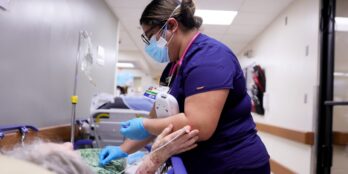
How to Reduce and Manage Adverse Drug Events in Long-Term Care
 3 min
3 min
With adverse drug events (ADEs) resulting in as much as $4 billion in excess healthcare expenditures and 93,000 associated deaths a year, their impact is undeniable. Most ADEs are preventable, meaning providers can reduce them in order to improve their status in the care network. And while a subset of ADEs can’t be prevented, there are still steps providers can take to improve their response times and treatment of unpreventable events or reactions.
This post outlines the preventable and unpreventable ADEs that occur in long-term care, and what providers can do to reduce and manage these occurrences.
Preventable Causes
In the United States alone, an estimated 800,000 preventable medication-related injuries occur every year in long-term care facilities. Medication errors are a subset of ADEs that relate specifically to preventable events and often happen during the process of administration, documentation, transcription, prescription, and dispensing. Poor communication between pharmacies, registered care staff, physicians, and patients are all common points of error, especially during transitions of care.
A recent study found that transfer-related medication errors occurred in up to 31% of all long-term residents. Transitions of care are an integral part of patient care, and require sufficient communication and resources to ensure their success. If a patient is prescribed a critical medication while in hospital, but that information isn’t communicated to the long-term care team upon discharge, the patient won’t receive the medication they require and could suffer an adverse event as a result.
Across the care continuum, providers are also prescribing unnecessary medications, which increases the risk for an adverse event or drug-to-drug interaction. In post-acute care, atypical antipsychotics are most frequently listed as a cause in preventable ADEs, so leveraging non-drug related intervention methods is the best way to reduce or remove that risk.
Unpreventable Causes
While many ADEs can be avoided through proper vigilance and enhanced communication, not all ADEs can be prevented. For example, a resident who didn’t previously have issues with antibiotics may develop an allergy to the medication, resulting in an unexpected and unpreventable reaction. In these instances, having the ability to identify and respond quickly to the reaction is essential to improving outcomes.
Making it easy for staff to identify, document, and communicate the symptoms of an ADE, allows the care team to treat the cause. By improving the response time, providers are able to reduce the likelihood of a rehospitalization resulting from an ADE. Not only does this create a better experience for the resident, but it helps to minimize risk and improve quality ratings.
How to Reduce ADEs
Understanding how and when providers can intervene will help reduce the potential for ADEs and improve outcomes when an ADE occurs. Increased monitoring of the entire medication process, taking a team approach, heightening the awareness of high-risk medications, and improving communication throughout the transition of care all help to address the risk of ADEs. However, managing all these components without the right processes and support can be a challenge.
Implementing the right systems and technology solutions helps reduce risk, increase response time, and improve the communication and availability of important information.
Learn more about the solutions and products offered by PointClickCare by visiting our website.
May 29, 2018






